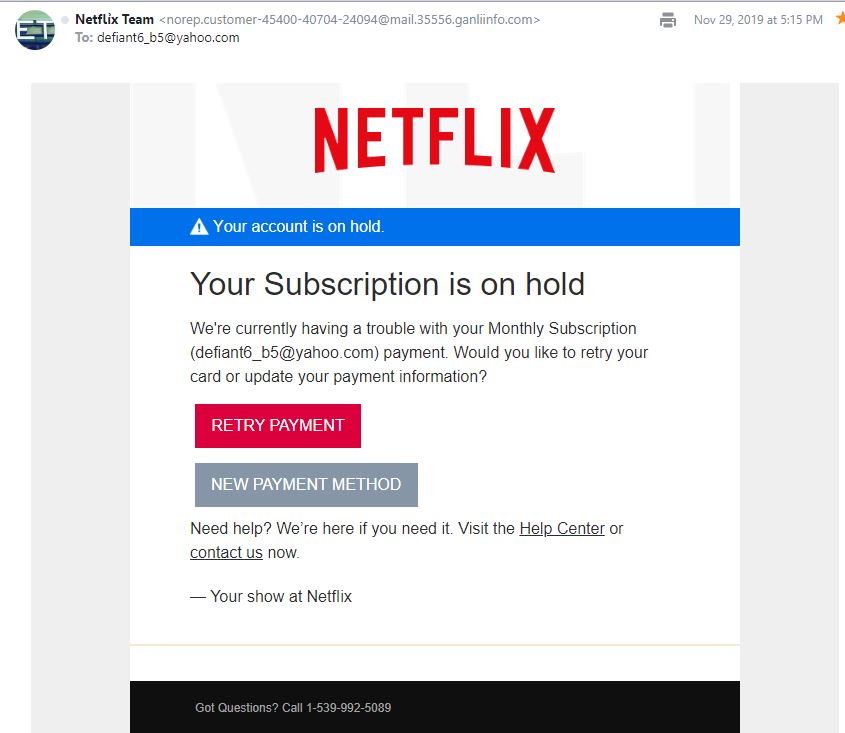

This has not been the case.Īnd then this stunning admission: “The mechanisms for the monetization of content are in disarray.” It was our belief that cord cutting losses would be offset by gains in streaming. At the same time we have seen the rise of direct to consumer streaming apps including our own AMC+. “Our industry has been under pressure from growing subscriber losses primarily due to cord cutting.
MAILIST NETFLIX TV
So is Paramount, Peacock and even AMC, a cable TV major in the US which has been around for over 50 years (and is the maker of Breaking Bad and Mad Men, among many achievements).īelow is an extract from a memo to AMC employees by its chairman explaining the problem: Warner Bros Discovery (owner of HBO/CNN/Time Warner and maker of Game of Thrones) which last year changed hands for the second time in two years, is also struggling to get its streaming service into the black. This cable-streaming balancing act is being attempted by many other large legacy players, mostly without real success. For Disney, this may be a fairy tale ending, but the plot calls for some very dark times first.” But buyers who pushed the Disney stock price up 30% in the three month lead-up to the announcement won’t be the same as those who will be around to stomach the five years of grinding and significant losses the company will have to absorb, all with little clarity on the final success of the venture. In our 2019 article we said “Streaming will ultimately disrupt and supplant traditional free-to-air channel viewing globally, with the emergence of four or five players, like Disney+ and HBO, along with Netflix and maybe Apple, as the new majors. This removal would hit hard the 41% of total revenues (US$24.5b in 2018 out of US$59.4b) and 42% of total operating income (US$6.6b of US$15.7b) the company generated from these businesses at the time. The reported results were so bad that the company fired its chief executive Bob Chapek and brought back the previous CEO Bob Iger.Īs we noted of Disney’s move into its own streaming service in 2019, to generate meaningful subscriber additions and hit scale the company would first have to remove its own content from rival cable and streaming platforms. The merged Disney Fox last month filed a US$1.5bn quarterly loss in its streaming service despite being over the magic 175m subscribers, implying that something is very wrong with its cost structure. So Murdoch made the smartest business decision of his life and sold.

Murdoch had seen this film before: while attempting to build his News Corporation into a company worth US$50b, Google and Facebook managed to create businesses that were 10 times more valuable in a fraction of the time – at the direct expense of Murdoch’s News Corp/Fox. All are facing crises.Įntertainment is a scale business, so when no less an operator than Rupert Murdoch realised his film and TV business was sub-scale, he abruptly sold the company, 20th Century Fox. Having seen Netflix succeed, permanently disrupting the business model, traditional media companies such as Disney, Paramount and Warner Bros Discovery followed. Why Murdoch got out of movies and TV, and why Disney is struggling Its decision to move into advertising looks set to further underwrite profit growth. This content spending and library represent a moat which will be very hard to breach. This is after expensing US$14b on movies and TV, likely the same next year. The company is not in losses, either cash or accounting, and will generate around US$11 of earnings per share this year. Netflix, irrespective of the naysayers, remains the only game in town when it comes to profitably running a streaming service. Netflix Subscribers vs Profitability Source: Company Reports, Morgan Stanley The chart below shows how Netflix only succeeded when total subscribers exceeded 175 million across the world, generating a US$5b turnaround to record funds from operations (excluding DVD profit) of over US$2b in 2020.

Streaming is disrupting the way TV is consumed and further changes are imminent – it is likely that within ten years all TV will be streamed. Source: Bhavya Khanchandani “The mechanisms for the monetization of content are in disarray.” – US Cable-TV veteran James Dolan


 0 kommentar(er)
0 kommentar(er)
